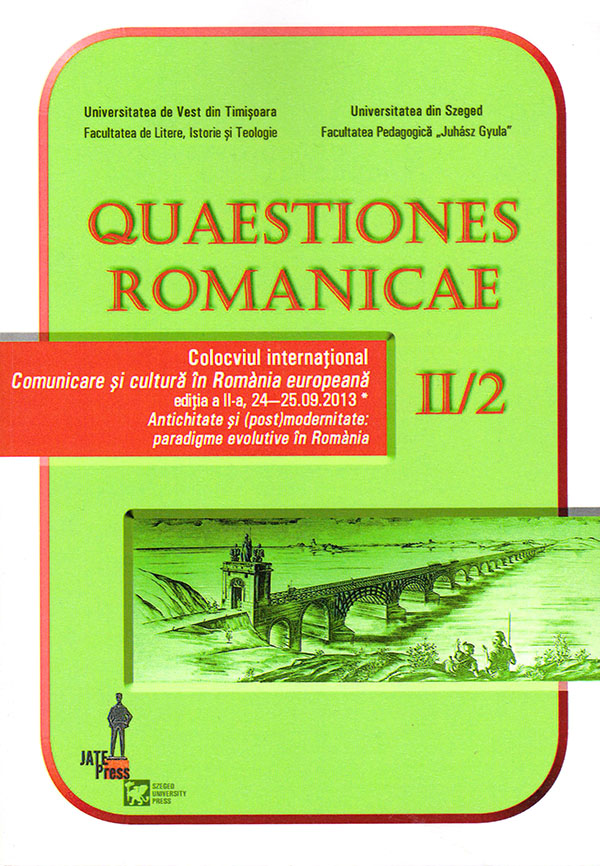Des couleurs de la Colonne Trajane à la chromatique de la langue roumaine
Abstract: (From the Colours of the Roman Column to the Chromatics of the Romanian Language) It is well known that the ancient statues and monuments did not catch the eye with the candid glitter of the marble, did not caress the sight with the warm light of the stone. They were coloured, displaying chromatics that could often be strident. Things are not different in the case of the famous Trajan’s Column, erected 1900 years ago at the foundation of our people. The Italian experts have even succeeded in recomposing its colours of old. Starting from this “restoration”, but also from what we can find in the Latin texts, we have tried to accomplish an inventory of the colours known and used by the Romans. Our attention has been focused on the Latin terms for various colours and on the way these colours, together with their hues, were perceived by the people of old. At the same time, we shall seek to notice the linguistic means they used to resort to in order to designate certain colours, in default of a proper term (comparisons with gems, flowers, birds etc.). The linguistic study is conceived as a diptych, the other counterpart consisting of the descendants in the Romanian language of the Latin chromatics. On the one hand, we are talking about the inherited terms, on the other hand, about the inherited procedures, the most important of which are the derivation with suffixes and the comparison. We are also interested in the way these procedures develop on Romanian ground. Thus we hope to obtain two colour palettes, in which the linguistic combinations transcribe the blend of substances used to colour the monuments which fix us in eternity.
Keywords: Columna Traiana, latin, colours, special significance, Romanian, translation.
Rezumat: Este bine cunoscut faptul că statuile şi monumentele antice nu luau ochii cu strălucirea candidă a mamurei, nu mângâiau privirea cu lumina caldă a pietrei, ci erau colorate, afişând o cromatică adesea chiar stridentă. Lucrurile nu stau altfel cu faimoasa Columnă a lui Traian, înălţată acum 1900 de ani la temelia poporului nostru. Specialiştii italieni au reuşit chiar să-i reconstituie culorile de odinioară. Plecând de la această „recondiţionare”, dar şi de la ce găsim scris în textele latine, am încercat să realizăm un inventar al culorilor cunoscute şi folosite de romani. Atenţia noastră se îndreaptă asupra termenilor latini care desemnează diversele culori şi a modului în care acestea, cu nuanţele lor, erau percepute de către oamenii de odinioară. Vom căuta, totodată, să observăm la ce mijloace lingvistice apelau aceştia pentru a desemna anumite culori, în lipsa unui termen propriu (comparaţii cu pietre preţioase, flori, păsări etc.). Studiul lingvistic este conceput în diptic, celălalt pandant fiind constituit de urmaşii din limba română ai cromaticii latine. Este vorba, în primul rând, de termenii moşteniţi, pe de alta, de procedeele moştenite, cele mai importante fiind derivarea cu sufixe şi comparaţia. Ne interesează, în acelaşi timp, modul în care aceste procedee se dezvoltă pe teren românesc. Sperăm să obţinem astfel două palete coloristice, în care combinaţiile lingvistice reproduc amestecul substanţelor pentru colorarea monumentelor ce ne fixează în eternitate.
Rezumat: columna traiană, latină, culori, semnificaţie specifică, română, traducere.
